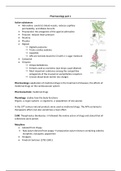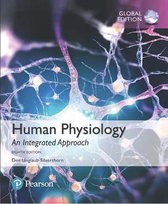Summary
Summary Physiology and Pharmacology
- Course
- Institution
- Book
Extensive elaboration of all lectures at the University of Groningen. With the addition of the books Color atlas and Human physiology an integrated approach. Extensive elaboration of all lectures at the University of Groningen. Complementing the books Color atlas and Human physiology an integrated...
[Show more]





